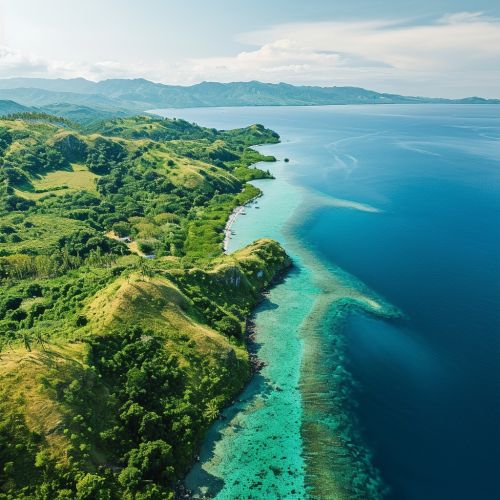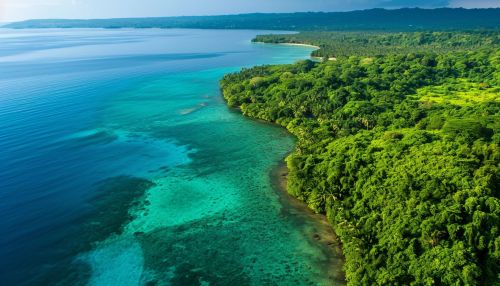Insular Region (Colombia)
Geography
The Insular Region of Colombia, also known as the Colombian Archipelago, is one of the six natural regions of the South American country of Colombia. This region is composed of the islands in the Caribbean Sea and the Pacific Ocean. The region is characterized by its tropical climate and rich biodiversity.


Caribbean Islands
The Caribbean Islands of the Insular Region include the San Andrés and Providencia archipelago, and the islands of San Bernardo, Tortuguilla, and Rosario. The San Andrés and Providencia archipelago is the largest group of islands in the region, and it is located about 775 kilometers northwest of the Colombian mainland. The archipelago is composed of two main islands, San Andrés and Providencia, and several smaller islands and cays.
San Andrés
San Andrés is the largest island of the archipelago and is known for its beautiful beaches, coral reefs, and vibrant culture. The island's economy is largely based on tourism, with many visitors attracted to its natural beauty and unique Creole culture.
Providencia
Providencia, also known as Old Providence, is a smaller island located north of San Andrés. The island is known for its well-preserved ecosystems, which include coral reefs, mangroves, and tropical forests. Providencia is also home to the Old Providence McBean Lagoon National Natural Park, a protected area that aims to conserve the island's unique biodiversity.
Pacific Islands
The Pacific Islands of the Insular Region include the islands of Gorgona, Malpelo, and the Baudó Range. These islands are known for their unique ecosystems and high levels of endemism.
Gorgona Island
Gorgona Island is located about 35 kilometers off the Pacific coast of Colombia. The island is known for its diverse wildlife, including several species of monkeys, snakes, and birds. Gorgona Island is also home to the Gorgona National Natural Park, a protected area that aims to conserve the island's unique ecosystems.
Malpelo Island
Malpelo Island is a small, uninhabited island located about 500 kilometers west of the Colombian mainland. The island is known for its unique marine biodiversity, including several species of sharks, and is a popular destination for scuba divers. Malpelo Island is also a UNESCO World Heritage Site, recognized for its outstanding natural beauty and biodiversity.
Climate
The Insular Region has a tropical climate, with high temperatures and high humidity levels throughout the year. The region receives high amounts of rainfall, especially during the rainy season, which typically occurs from May to November. The region's climate contributes to its rich biodiversity, with many unique species of plants and animals found in the region.
Biodiversity
The Insular Region is known for its rich biodiversity, with many unique species of plants and animals found in the region. The region's islands are home to a variety of ecosystems, including coral reefs, mangroves, and tropical forests. These ecosystems support a wide range of species, many of which are endemic to the region.
Economy
The economy of the Insular Region is largely based on tourism, with many visitors attracted to the region's beautiful beaches, unique ecosystems, and vibrant culture. Other important sectors of the region's economy include fishing and agriculture.
Culture
The culture of the Insular Region is diverse and vibrant, with influences from indigenous, African, and European cultures. The region is known for its unique Creole culture, which is reflected in its music, dance, and cuisine.
